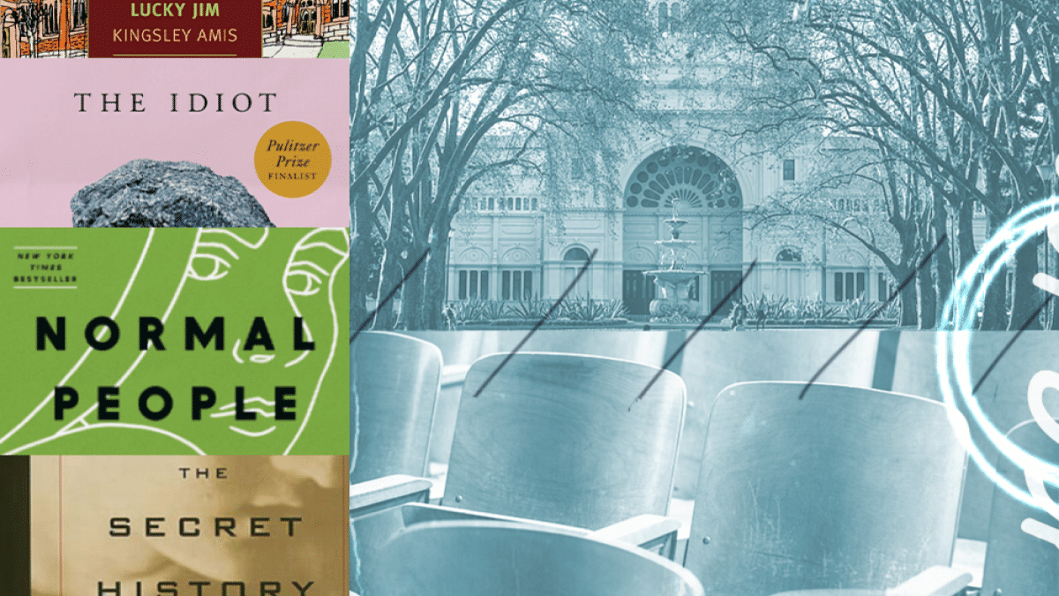The allure of the campus novel

In Susannah Clarke's Piranesi, whose review rests atop this article, the narrator labels time not by calendar dates but by the things that happen to him—the birds who visit his wing of the world, the tides that come swinging or gently. Some of us readers, similarly, like marking time by the seasons and the books they inspire us to read. And while I treasure the blanket wraps and hot chocolate mists of cosy winter stories, nothing feels as stimulating, as strangely soothing, come Fall semester of September, as the campus novel.
Is it narcissism? This need to read—or write—"about [our] own world, and indeed about [our]selves", as Elaine Showalter once put it?
Maybe so, but I'd be quicker to accept the blame of voyeurism than narcissism if I had to reflect on this fascination with books set in university or school campuses, usually amidst the politics of humanities faculty boards.

While growing up, particularly in a country like Bangladesh, we are made to believe that knowledge exists like a block of concrete that we must train ourselves to lift. We are conditioned to see our teachers and admin personnel as all knowing epitomes of composure. In the space of a campus novel, it is so fascinating to watch them falter.

Netflix's recently-premiered TV show, The Chair, takes a politely humorous and "woke" tone in portraying the drama of tenure approvals, gender inequalities, and repressed love lives in the English department of Pembroke College in the States. But while it sometimes risks sounding preachy, it echoes the more overemphatic comedy of Kingsley Amis's 1954 novel, Lucky Jim, or the heated, hilarious intellectual feuds of Zadie Smith's On Beauty (2005), as academics become increasingly panicked about designing course curricula and drafting lectures. In Lucky Jim, especially, Amis pokes fun at how arbitrary the process of designing a syllabi can be—as arbitrary as the publications or faculty positions one scores based often on what transpires outside the classroom or library.
The satire in campus novels—this ability to make light of its own work—succeeds in melting that concrete block of the idea of knowledge. In this more pliable form, the performance of education—the preparation, the missteps, the passion, the commitment—becomes so much easier to respect and empathise with, and so much more deserving of embrace. It is so much fun to realise that our teachers, too, are constantly in a state of learning and unlearning.
And yet some of the best campus novels have been the ones written from the point of view of students. Interestingly, theirs has been the perspective more steeped in intellectual inquiry.

"I was thinking about the structural equivalences between a tissue box and a book: both consisted of slips of white paper in a cardboard case; yet—and this was ironic—there was very little functional equivalence, especially if the book wasn't yours", Selin, a Harvard freshman, muses on her first day on campus in Elif Batuman's The Idiot (2017)—my favourite campus novel of all time. Here, and in Donna Tartt's cult classic, The Secret History (1992), the microcosm of the college campus teases out the basest instincts and the most fascinating observations in young minds waiting to be stretched free. From 'Form in Nonfiction Film' to the ecstatic heights of a Dionysian bacchanalia, the places one can go are truly limitless, and from the often forced interactions of specimens from different communities arise discerning commentaries on race, class, and morality.
Campus novels, to me, bring a heightened equivalent of the feeling I get every Saturday, when a fresh batch of book reviews lands in our inbox. "What new ideas, what new emotions will we encounter while preparing for this week's issue?" I ask myself after the lull of the weekend. After the lull of the summer break, similarly, the Fall semester brings the promise of new adventures. Books about the Fall semester—they're vicarious living.
Sarah Anjum Bari is editor of Daily Star Books. Reach her at [email protected] or @wordsinteal on Instagram and Twitter.

 For all latest news, follow The Daily Star's Google News channel.
For all latest news, follow The Daily Star's Google News channel. 



Comments